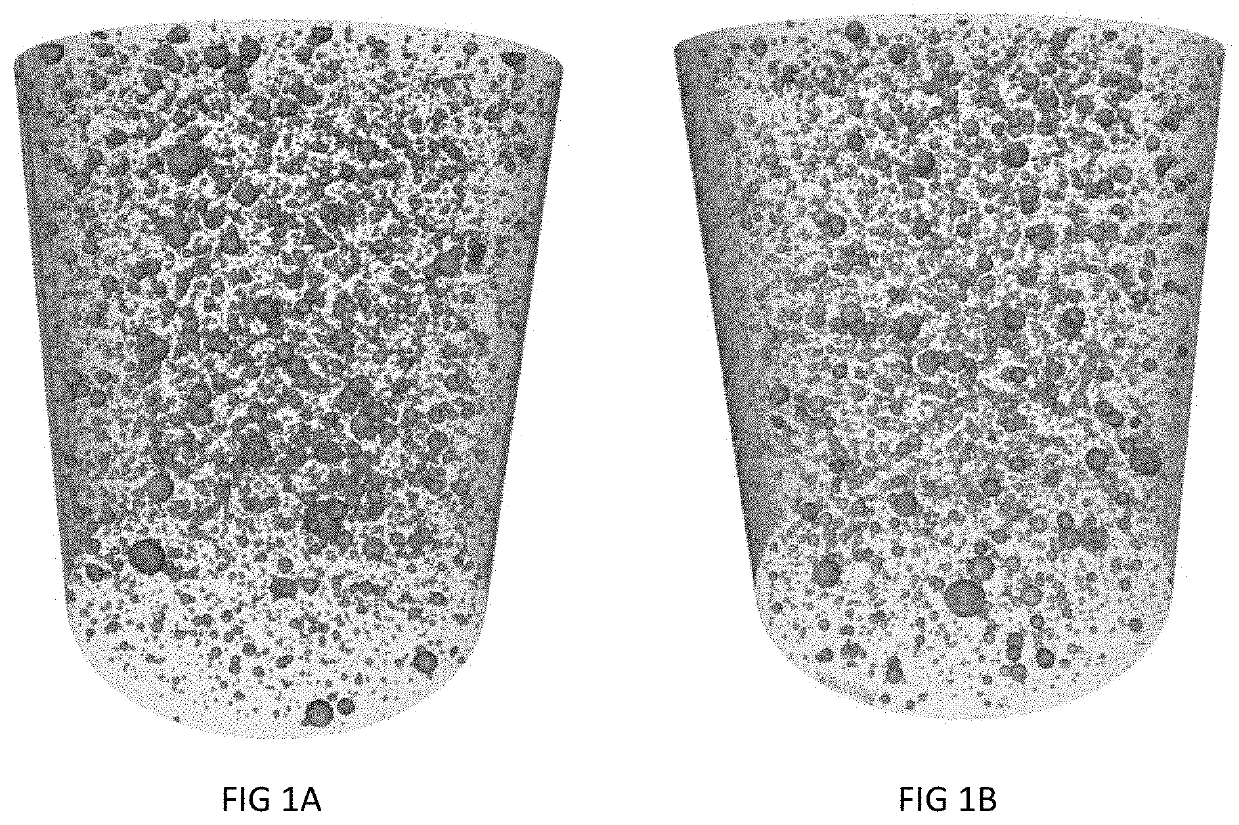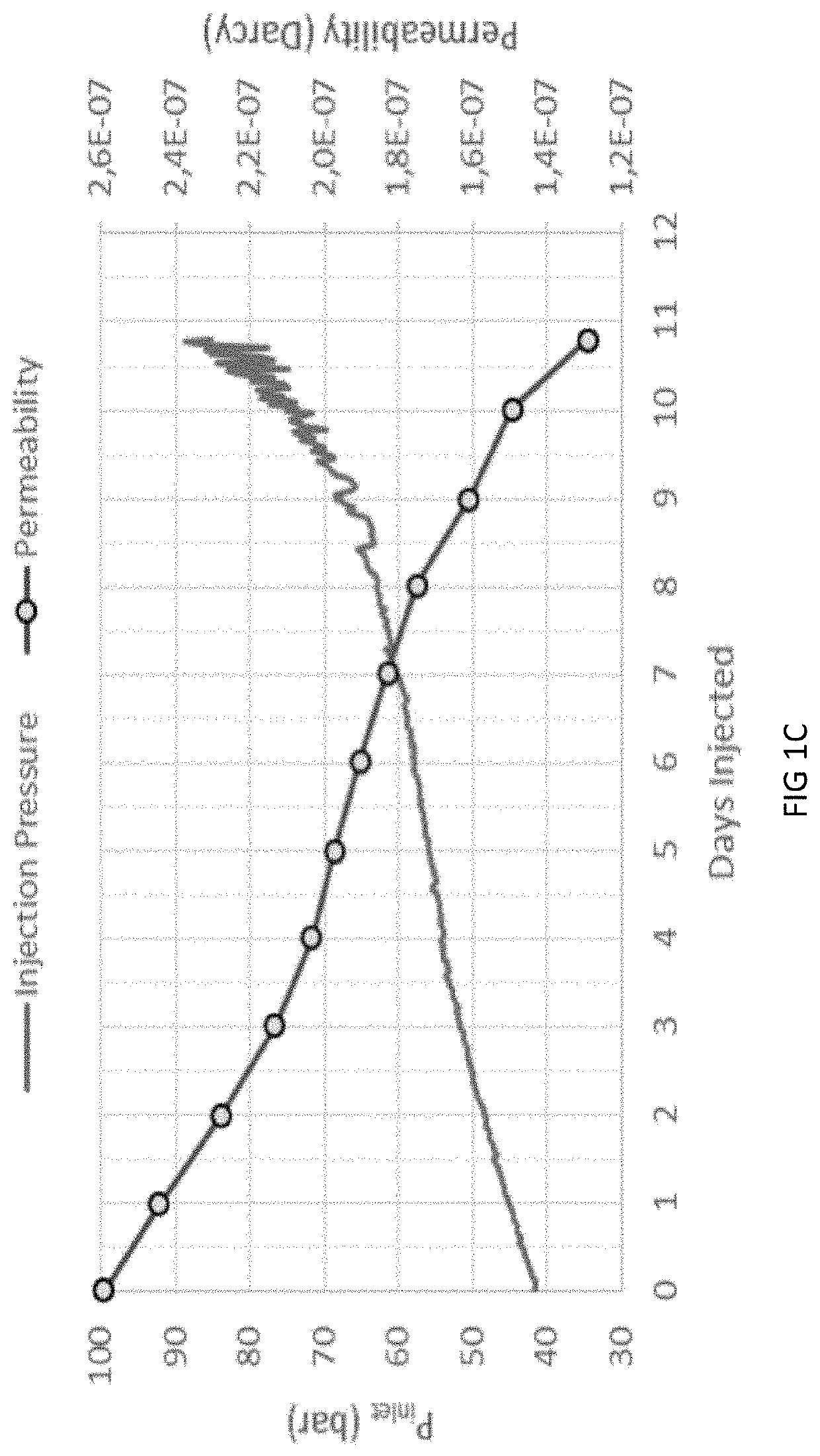Composition of a cement additive material as an additive to cementitious mineral admixtures, and utilised as latent hydraulic binders to improve the outcome of cementitious products
a technology of additive materials and cementitious minerals, applied in cement production, solid waste management, sustainable waste treatment, etc., can solve the problems of not being particularly standard friendly or reasonably priced, and achieve the effect of improving the properties of cementitious mineral admixtures and increasing the life of cement plugs
- Summary
- Abstract
- Description
- Claims
- Application Information
AI Technical Summary
Benefits of technology
Problems solved by technology
Method used
Image
Examples
experiment # 1
Experiment #1
[0057]In an experiment, solid cementitious mineral admixture products were fabricated based on a mixture of 80% Portland cement, and 20% olivine (which is a divalent magnesium-iron solid solution silicate) by weight, and water having an ordinary W / C number (W / C=water to cement ratio). The fraction of olivine was 0.2 with denatured water added. A solid cementitious mineral admixture cylinder was prepared and flooded by a seawater analog brine for a period of eleven days. The changes of permeability was measured throughout the experiment and the porosity was evaluated before and after the experiment by using a CT scanner.
[0058]The measurements showed that porosity of the product, when applying the inventive cementitious mineral admixture was reduced by as much as 55%, and permeability went down by 70% after said just eleven days exposed to brine. The experiments show that a more dense and water resistant concrete material is achieved by the present invention.
[0059]FIGS. 1...
experiment # 2
Experiment #2
[0063]In another experiment, a mixture of Portland cement and the present invention as in Experiments #1 and #2 was exposed to CO2 for a period of a week.
[0064]FIGS. 2A and 2B disclose the CT scans of before and after Experiment #3. The red denotes voids within the sample in both FIGS. 2A and 2B. The green arrow in FIG. 2A points to large number of inhomogeneities. In FIG. 2B the green shows precipitation within the voids of the sample.
[0065]FIGS. 2C and 2D disclose CT scans of slices of the samples that are disclosed in FIGS. 2A and 2B respectively. Notice that the internal crack of FIG. 2C has been healed by the end of the experiment as shown in FIG. 2D.
[0066]Measurements showed that after exposure to CO2, over 90% of the pores were healed by newly formed minerals. Additionally inhomogeneities were nearly eliminated. These affected reduce the porosity of the sample.
experiment # 3
Experiment #3
[0067]The test the strength and properties of the invention at different additive percentages (20, 35, and 50% relative to total additive+cement) experiments was tested. A cylindrical sample was subjected to increasing amounts of compressive force to the top and bottom over a period of time. The experiment was stopped when the sample was no longer able to support the force that was applied. Each sample was cured for a period of one week before the experiment.
[0068]The results of this experiment is shown in FIG. 3. The 0% line (black) is regular Portland cement without the invention being added. The percentages are percent additive by percentage weight of the total cement mass. The Portland cement has a very sharp knee once it breaks. This is a sign that the Portland cement is failing in a brittle (“hard”) manner. By contrast, the results with the invention have a rounded knee. This is a sign that the failure is a rupture in a brittle manner, but in a cataclastic or roll...
PUM
| Property | Measurement | Unit |
|---|---|---|
| porosity | aaaaa | aaaaa |
| porosity | aaaaa | aaaaa |
| porosity | aaaaa | aaaaa |
Abstract
Description
Claims
Application Information
 Login to View More
Login to View More - R&D
- Intellectual Property
- Life Sciences
- Materials
- Tech Scout
- Unparalleled Data Quality
- Higher Quality Content
- 60% Fewer Hallucinations
Browse by: Latest US Patents, China's latest patents, Technical Efficacy Thesaurus, Application Domain, Technology Topic, Popular Technical Reports.
© 2025 PatSnap. All rights reserved.Legal|Privacy policy|Modern Slavery Act Transparency Statement|Sitemap|About US| Contact US: help@patsnap.com



